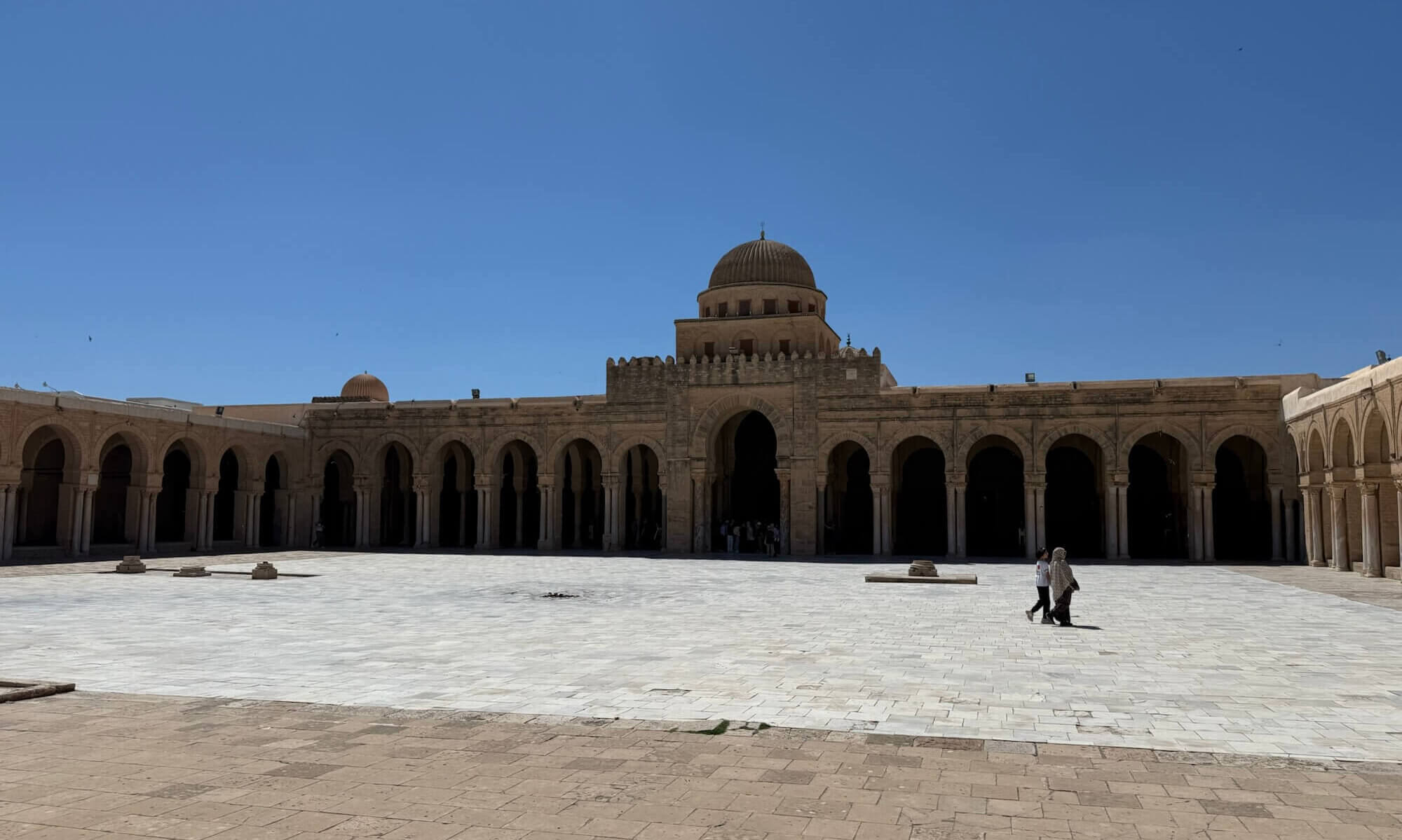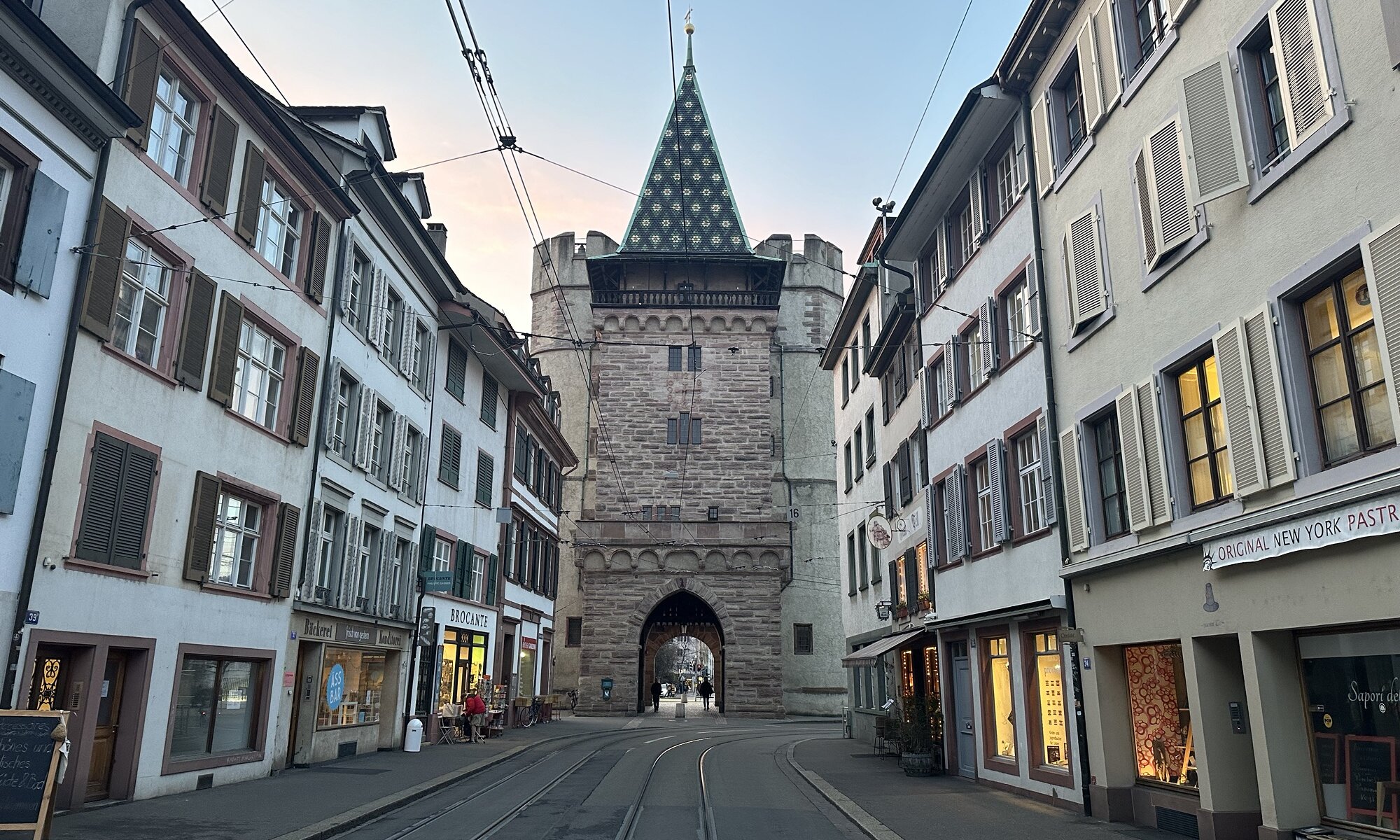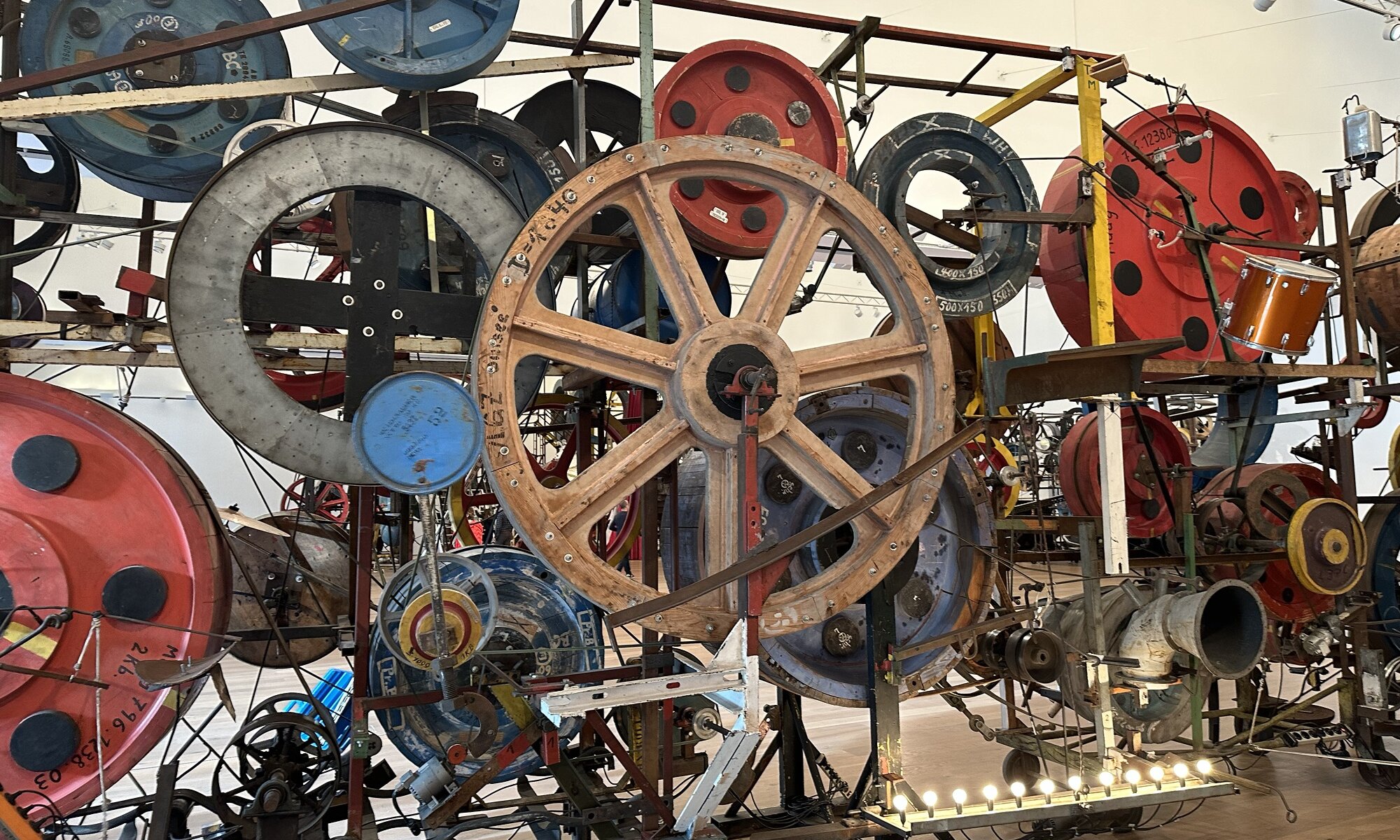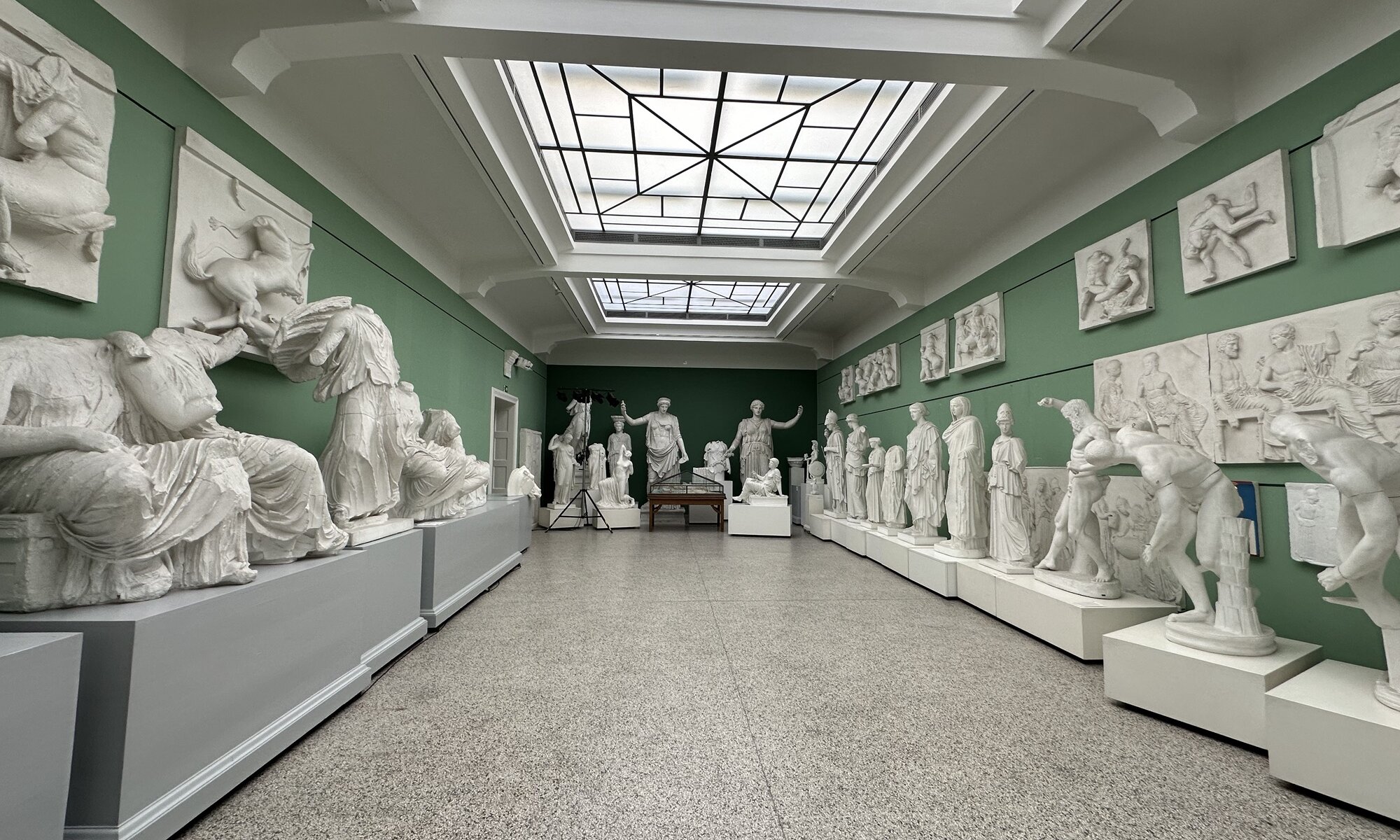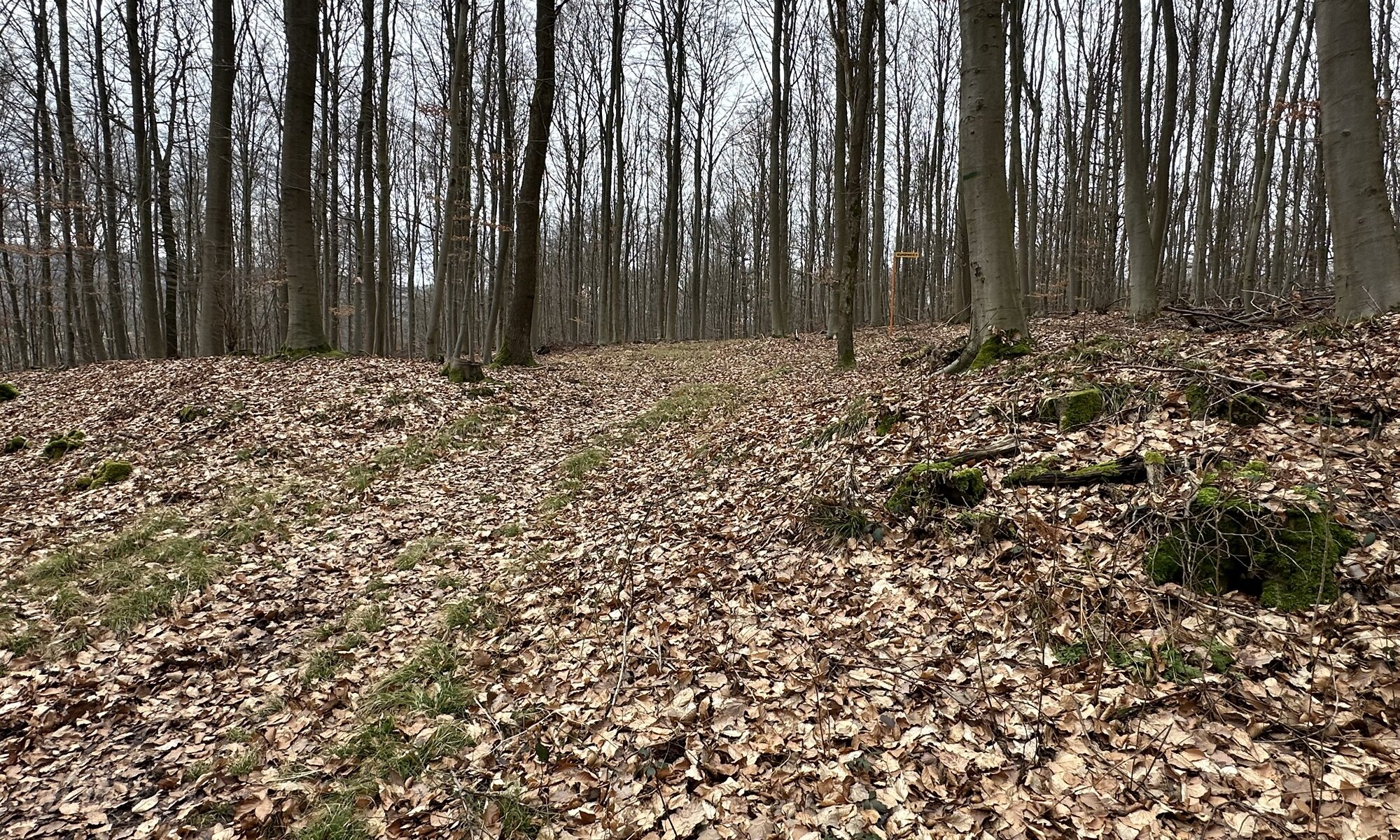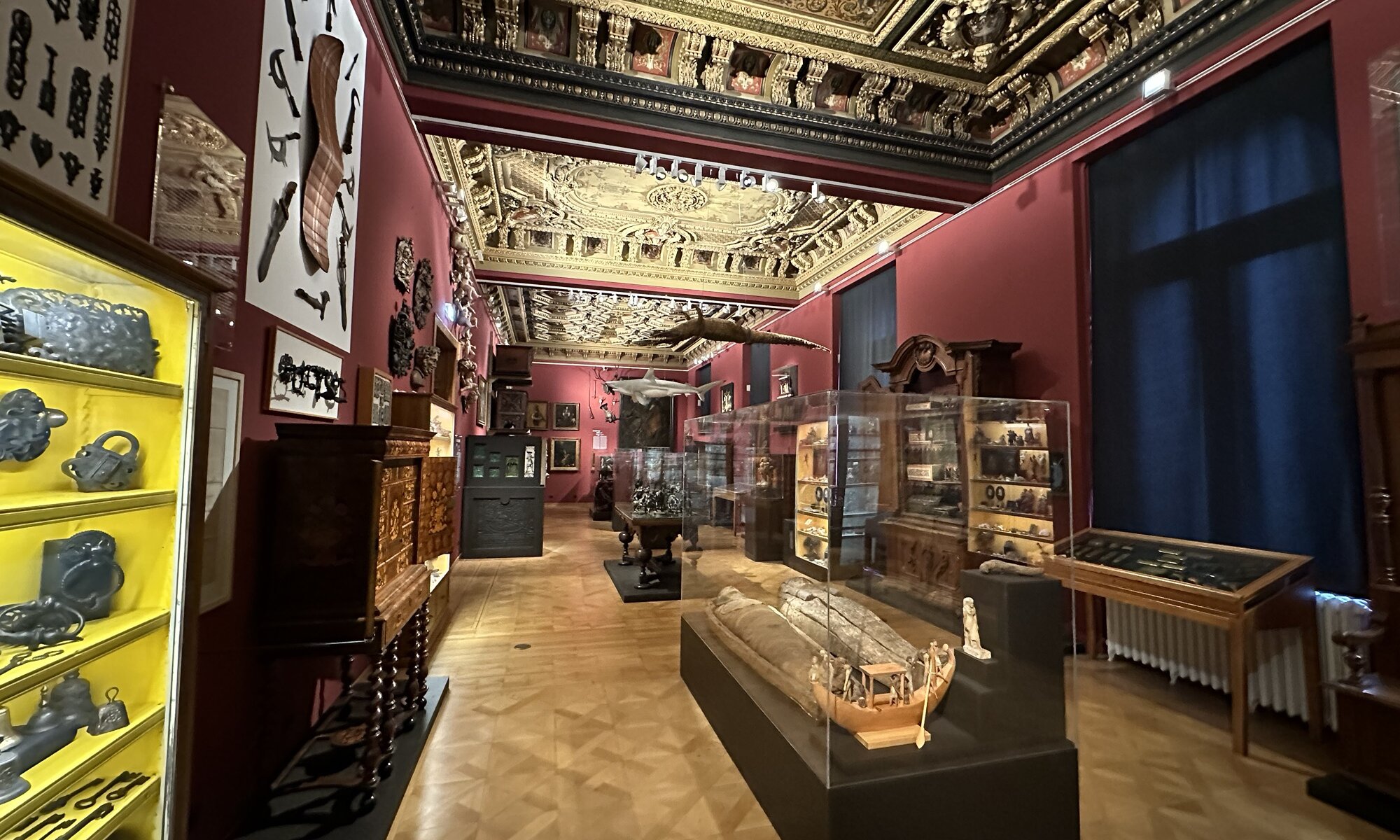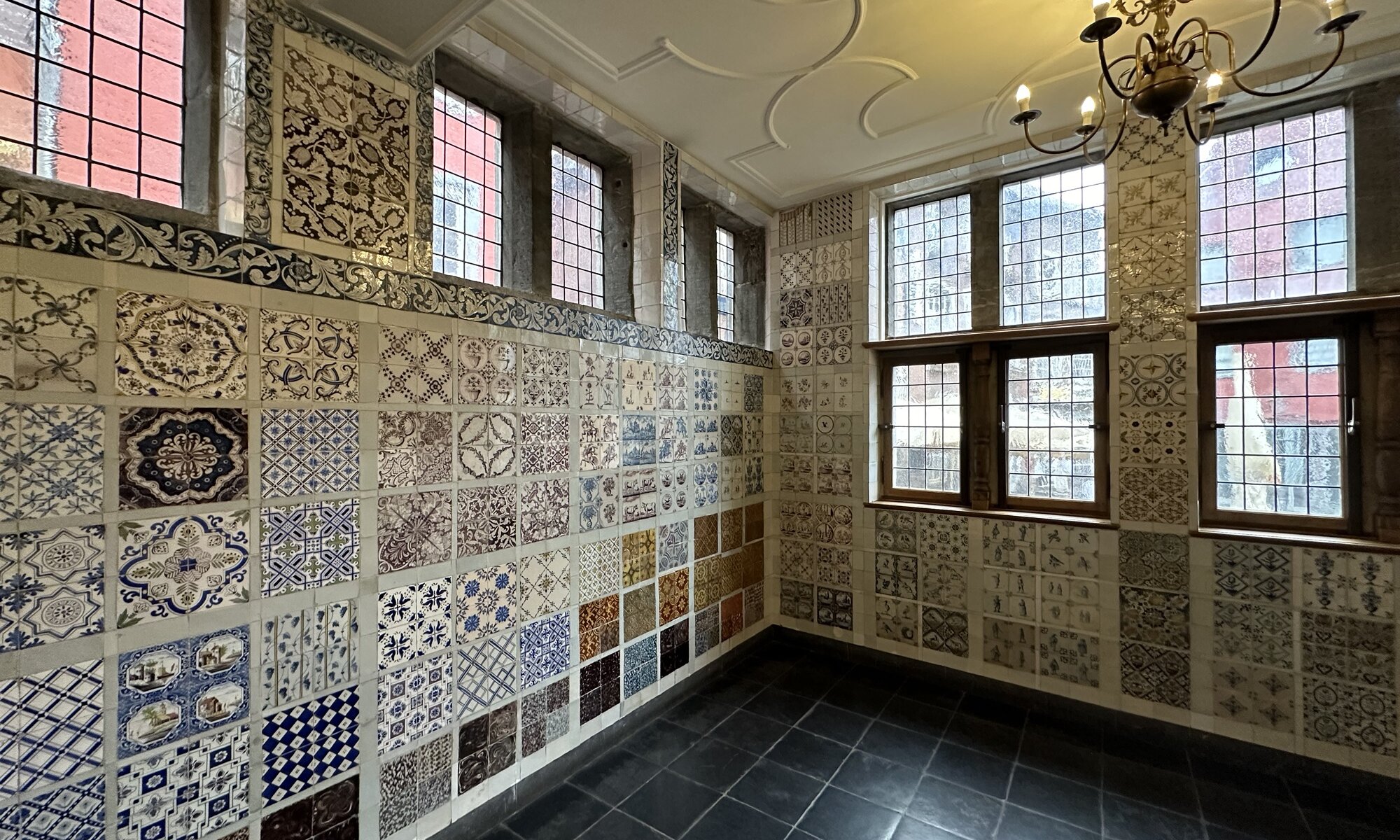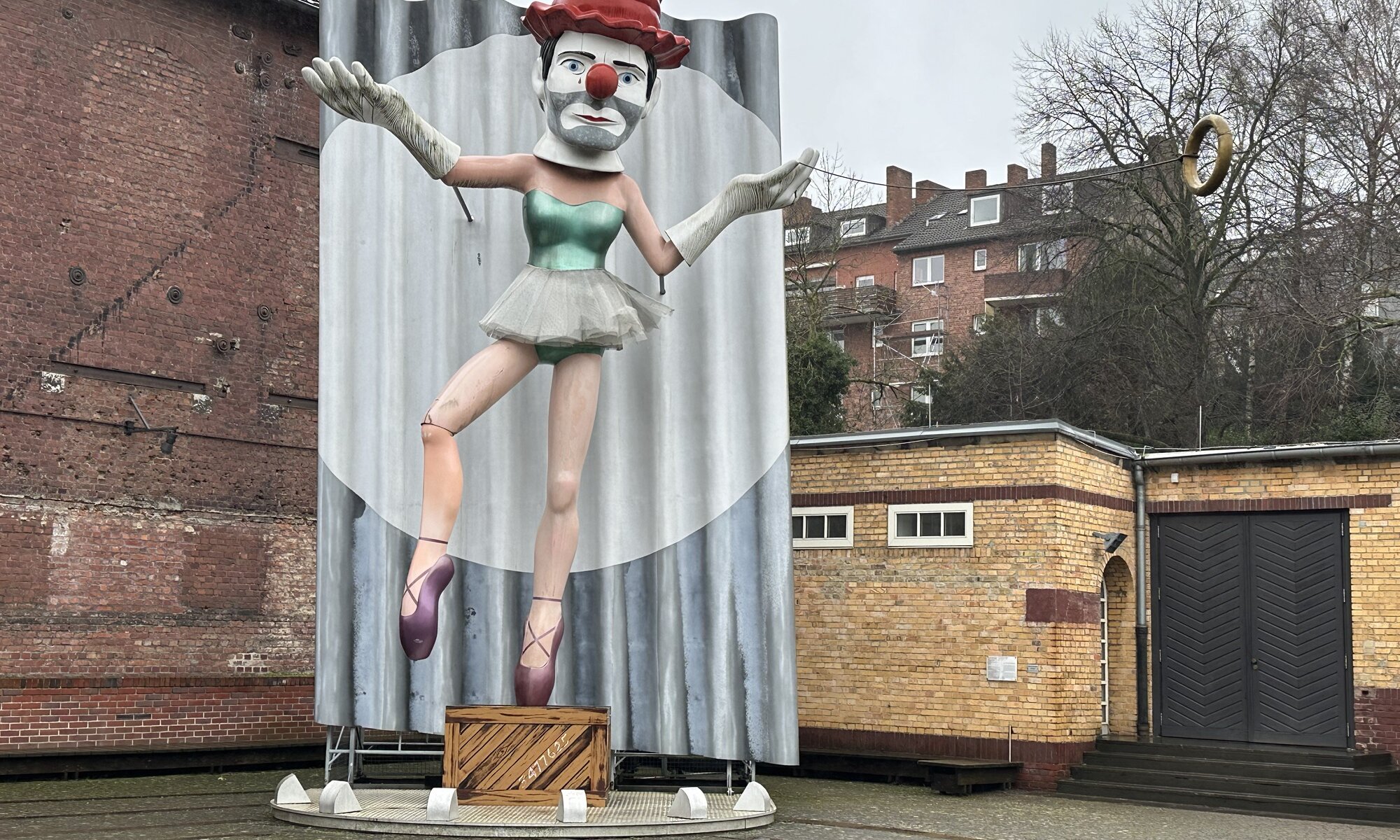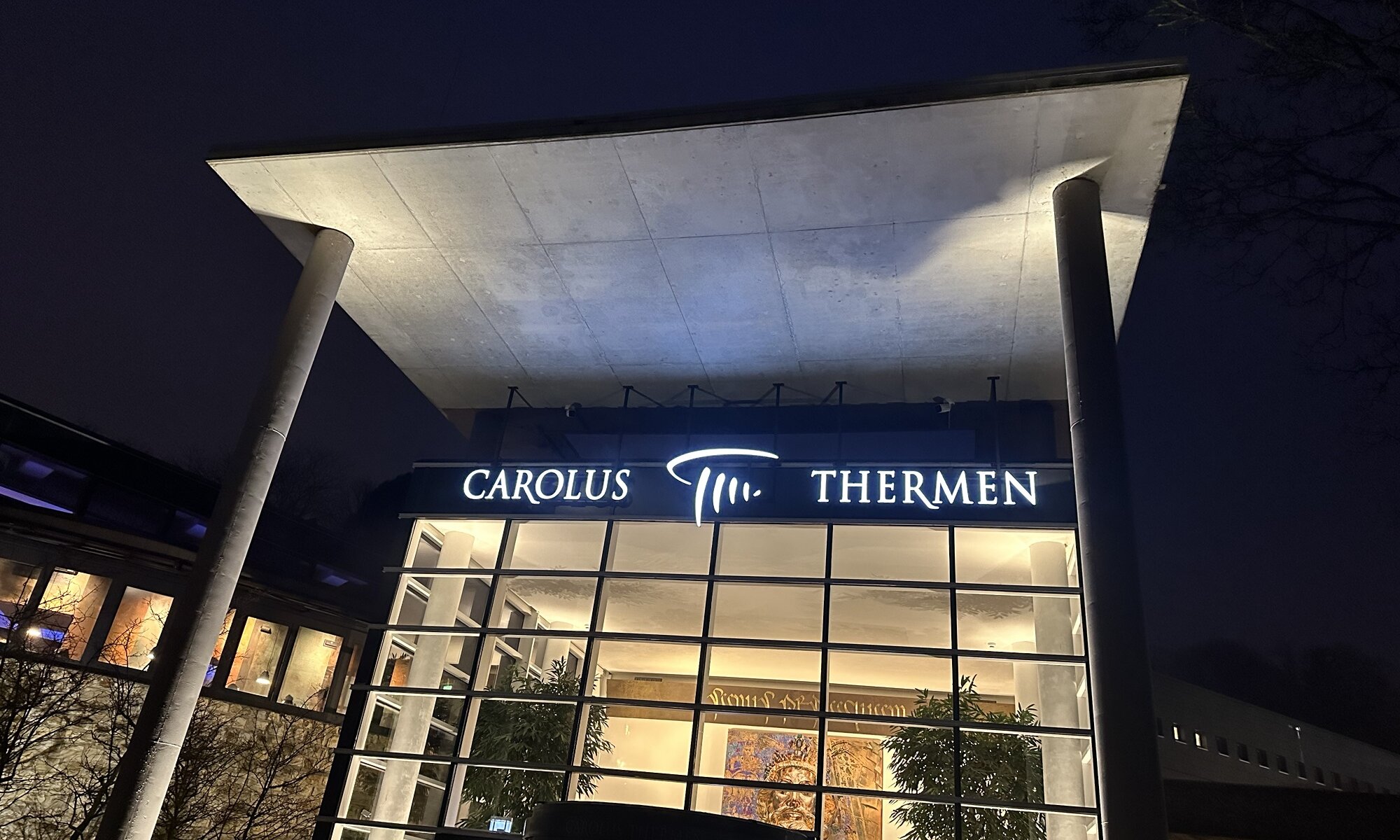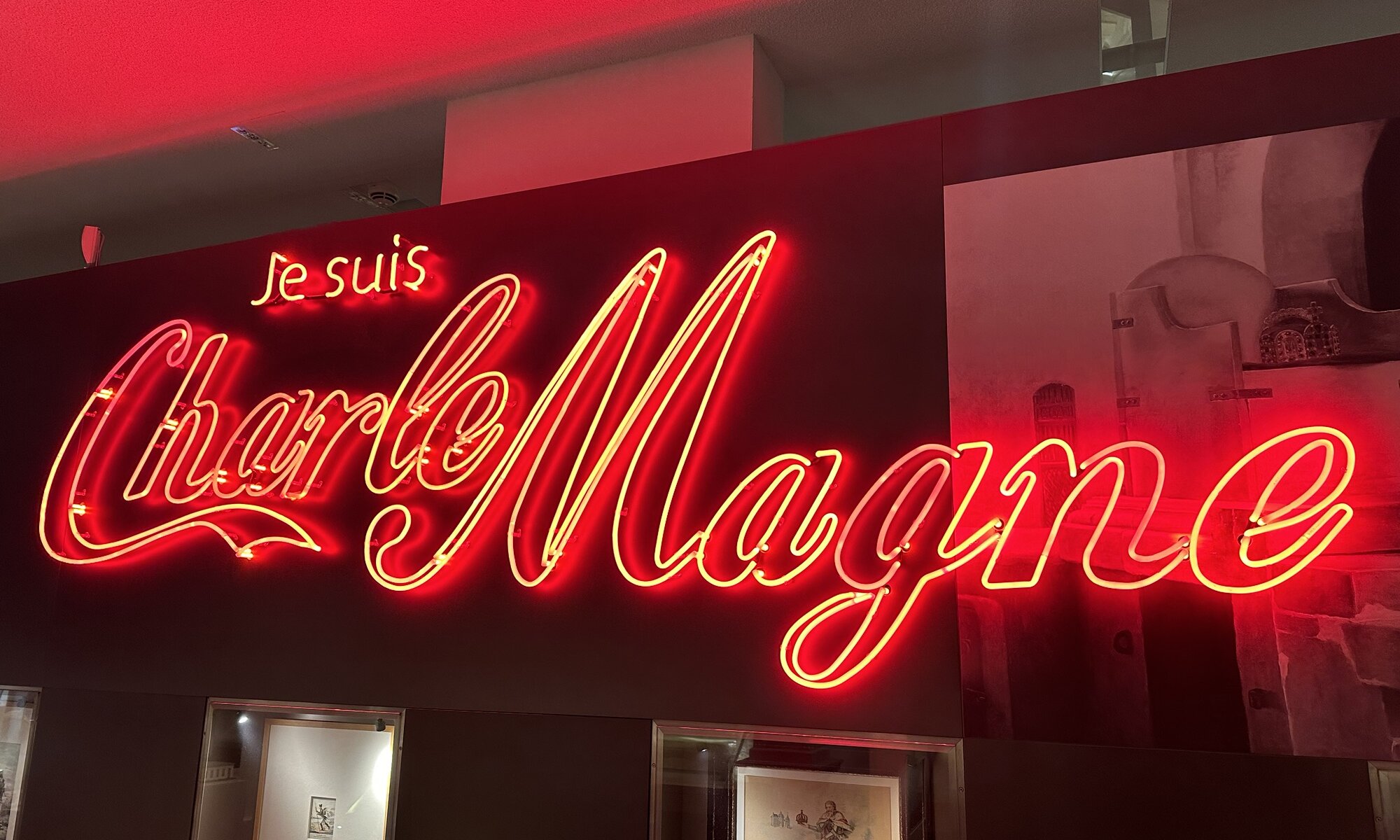Gates of German cities were really beautiful in the past. A good example for that is the Spalentor, the oldest of the three still standing ancient city gates of Basel (the others are the St. Johann and St. Alban gates). It was finished in the year 1400 CE and is one of the most beautiful in Switzerland with its two side towers and the decorated roof. The name is probably derived from the Latin word palus meaning pile – the Spalenvorstadt which the gates protects was in the beginning only protected by a fence of wooden piles.
Continue reading “Spalentor”Machinery
Jean Tinguely was a painter and sculptor from Switzerland. Most of his works can be easily recognized because they’re quite unusual: Tinguely often made sculptures looking like machines with moving parts and creating noise. A lot of them are exhibited in the Museum Tinguely at the shore of river Rhein at Basel. Inside the museum there are a lot of black buttons at the floor that you can push with your feet to activate Tinguelys inventions.
Continue reading “Machinery”Gipsabgußsammlung
No time to visit the Louvre, the British Museum, the Prado and the Musei Vaticani? Fortunately the university of Göttingen has the oldest collection of replicas of statues of the classical era – and still today it is one of the largest collections in the world. The 2,000 plaster casts stored by the archaeological institute show works exhibited in 150 museums around the globe. 1,000 of them are permanently on display, including the Venus de Milo, the Winged Victory of Samothrace and Laocoön and His Sons. The collection of mostly Roman and Greek statues was started by professor Christian Gottlob Heyne in the year 1767 for his own lectures.
Continue reading “Gipsabgußsammlung”Römerlager
During the Roman campaigns in Germania (12 BC-16 CE) the Roman Empire tried to defeat the Germanic tribes, secure the border at the river Rhein and extend its reign to the river Elbe in the east. Germanic people had crossed the Rhein several times and invaded Gallia which the Romans had declared their territory. To prevent this in the future Nero Claudius Drusus, stepson of emperor Augustus, commanded the Roman army and took control of Germania for nearly ten years.
Continue reading “Römerlager”SLM
The Suermondt-Ludwig-Museum (or short SLM) is the museum I liked most at Aachen and that is quite a surprise as large parts of the museum are filled with Christian art. It was founded in 1883 and is named after the entrepreneurs Barthold Suermondt and Irene & Peter Ludwig. First located in the Comphausbadstraße it can be found since 1901 at the Villa Cassalette at the street surrounding the city center and rather close to the main railway station. Within this wonderful building you can find paintings and sculptures from the 12th to the 18th century staged in a great way. A masterpiece are the many illuminated glass paintings.
Continue reading “SLM”Domschatzkammer
Due to the special role of Aachen in history the cathedral treasury is filled with many important items, gold and jewels. It is said to be the most important religious treasury north of the Alps and contains busts of Charlemagne, the golden reliquary that was used to store is hand after canonization, his coffin (the proserpina sarcophagus) and the ferula of Saint Peter. Even if you’re not a religious person it is worth to have a look into this well-secured treasure box.
Continue reading “Domschatzkammer”Couven
Johann Joseph Couven was an architect who created many churches, castles and villas in the area of Aachen. He was mainly working in Rococo and Baroque style and Couven was for example responsible for the redesign of the town hall building of Aachen including the market place in front and the Karlsbrunnen fountain. The Couven-Museum is located in building designed by his brother Jakob Couven: the Haus Monheim at the Hühnermarkt in the city center.
Continue reading “Couven”Umbrella factory
Since 1882 the Schirmfabrik Brauer was manufacturing umbrellas at Aachen. Between 1928 and 1984 the factory was located in the Jülicher Straße close to the city center. The factory building was created in New Objectivity style connected to Bauhaus, an amazing architecture including a saw-tooth roof typical for these times. And it is therefore no surprise that since 1987 the building is a protected heritage – but what to do with an historic factory that costs money to be preserved over time?
Continue reading “Umbrella factory”Rosenquelle
The reason to found the city of Aachen in exactly its current position and to create a Kaiserpfalz there is the existence of hot springs. Water is heated up in the underground and appearing in different places of the city center – the most obvious of one of these is the Kaiserquelle, today mostly named Elisenbrunnen. A hidden one is the Rosenquelle which is hidden today: its waters are 47 degrees Celsius hot at the surface and it is transported from the city centre to a spa, the Carolus-Thermen.
Continue reading “Rosenquelle”Centre Charlemagne
The history of Aachen is rich: from hot springs to the Romans, from the most important personality Charlemagne to the Karlspreis recipients, from the Treaty of Aix-la-Chapelle in 1748 to equestrian sports. For sure a city like this has its own city museum and in this case it is named Centre Charlemagne. It was opened in 2014 at the Katschhof between the cathedral and the town hall building.
Continue reading “Centre Charlemagne”